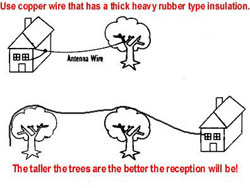
Sometimes, we tend to dismiss Nano Tech as a reaction to the hype. Most of what is coming from basic research in the field appears to be essential enough to stimulate productive derivation. As long as scientists continue to peer over the fences they [or government] sometimes erect, themselves.
Researchers from Stanford University have greatly improved the optical mismatch between nanoscale objects and light by creating the “bowtie nanoantenna,” a device 400 times smaller than the width of a human hair that can compress ordinary light waves into an intense optical spot only 20 nanometers wide. These miniature spotlights may one day allow researchers to produce the first detailed images of proteins, DNA molecules and synthetic nano-objects, such carbon nanotube bundles.
The bowtie nanoantenna consists of two triangular pieces of gold, each about 75 nanometers long, whose tips face each other in the shape of a miniature bowtie. The device operates like an antenna for a radio receiver, but instead of amplifying radio waves, the bowtie takes energy from an 830-nanometer beam of near-infrared light and squeezes it into a 20-nanometer gap that separates the two gold triangles. The result is a concentrated speck of light that is a thousand times more intense than the incoming near-infrared beam.
“What you end up with is a very small optical spot that you could scan to make detailed images of molecules and other nano-particles,” says Kino, the W.M. Keck Foundation Professor of Electrical Engineering, Emeritus. “Normally we use lenses to focus, but it’s not possible to resolve detail in objects smaller than one-half the wavelength of light.”
Because the shortest wavelength of visible light is 400 nanometers, a conventional microscope cannot resolve objects 200 nanometers or smaller. “But the bowtie antenna produces an optical spot that’s 20-nanometers wide, so we’re improving the resolution by a factor of 10,” Kino says.
No sighting of angels dancing on a pinhead.















nano spotlights may also allow IC fab to break the optical wavelength barrier for lithography